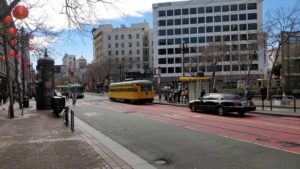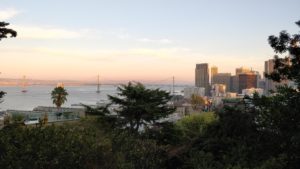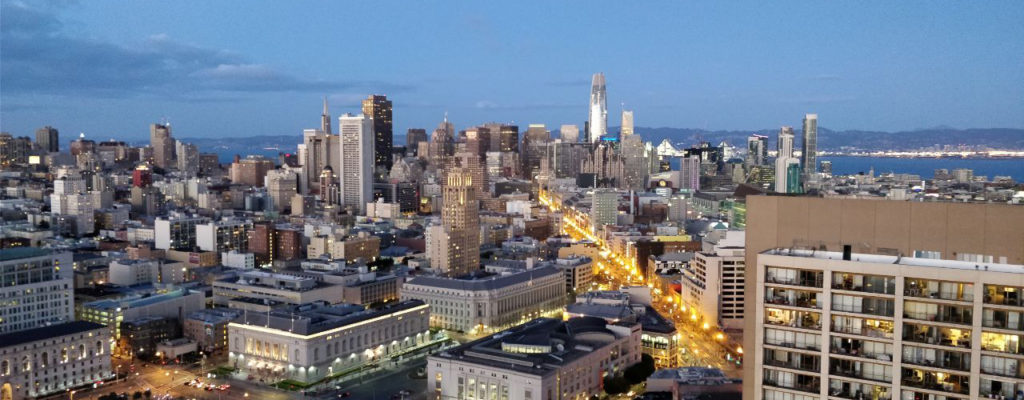- 3.03.2018
As I walk through the border control and I’m officially accepted to The Land of the Free for the second time in my life, I feel a certain ease that was definitely not there during my first time. Okay, the first time I had to wait for 1,5 hours in a shady “secondary inspection room” where I was interrogated about “why am I trying to enter the United States today” (protip: don’t be too honest with the border patrol agents, and certainly don’t tell them that you’ll be staying at “Finnish friends that you’ve never met before”!) But this time it’s not just about being asked two questions before getting the stamp on my passport. I exchange the “hi, how are you”s with my Lyft Line driver and the strangers sharing the ride with me, and feel weirdly comfortable as I realize that the sterile smell of the airport has changed to the sweet, skunky smell of California.

“You easily start to think that all the local people are either running a startup, driving an Uber, or homeless.”
I don’t know if it’s just about staying at a worse neighborhood than before, but during the first days, I think I’m paying a lot more attention to the number of homeless people on the streets of San Francisco. The San Francisco Bay Area includes San Francisco and San Jose, which are both in the top 10 of cities that produce the most GDP per capita in the world. In that sense – and especially when you’re coming from a Scandinavian welfare state – it doesn’t make any sense that SF has the third highest per capita homeless rate (of around 1%) in the US. On the other hand, the average rent for an apartment in San Francisco is around $3500/month nowadays, meaning that a minimum wage worker should have approximately 4.7 full-time jobs to afford a two-bedroom apartment.
When you’re spending just a couple of weeks in a startup bubble in the Bay Area, you easily start to think that all the local people are either working or running a startup, driving an Uber or a Lyft, or homeless. Or a combination of those. As the housing and living expenses increase all the time, so do the costs of attracting and retaining top talent. Based on my small sampling of companies, it seems like more and more companies are happier with enduring and adjusting to the time difference of +10 hours to the offshored engineers in Eastern Europe or India, than paying the average software engineer salary of almost $130 000 a year in the Bay Area.
The future of “working from home”?
Even the companies that have enough money to pay those type of salaries aren’t having an easy time! While it might be easier to attract older workers with family to live outside the SF streets packed with homeless people, hiring young guns to either live or commute every day outside the city seems extremely troublesome. The quality of public transport in the area doesn’t help with that issue at all. Thus many companies are forced to either give out free credits to Uber or Lyft or arrange their own hourly buses for their employees.
And if getting people to the workplace creates that much of a hassle, it’s no wonder that the companies are doing their best to make them not want to leave when the clock hits 5 pm. There seem to be two schools of thought among the startups. The others are trying to attract people by offering and advertising work-life balance. And the others are offering breakfast, lunch and dinner, sports and laundry services at the site to make people feel at home while being at work. I wouldn’t be that surprised if the next trend among the tech giants would be to build mini-cities with housing so that the workers would have to think of an excuse to leave their campus.

Time isn’t money, it’s way more expensive
What you’ll quickly realize in the Bay Area is that people value time over everything. When you’re getting paid hundreds of thousands of dollars to spend two hours each working day to commute, it makes sense that you’re willing to spend some extra dollars on someone else doing the cooking or groceries for you, or picking up your dog shit (still not sure if that makes sense, though). Or when you’re flooded with VC cash to become the next billion-dollar startup, it makes sense for a founder to hate every minute that they’re wasting on unnecessary calls or meets, since every wasted minute is a tiny edge given to your competitors.
Even if you couldn’t care less about the race for the next unicorn, San Francisco still makes for an interesting city to travel or work in. With a strong cultural background, there always seems to be something going on in the city. Combine that with the top startups in the world trying to make your living easier and more fascinating with cutting-edge technology and too much venture capital to burn (offering way too cheap services to gain and prove user growth), and you’ll experience something fairly unique during your time in the Bay Area.
Recruitment tips based on the trends I’ve seen in the Bay Area:
Engineers: almost all tech companies have huge amounts of data, and half of them are already playing around with machine learning or planning to do something with it. The highest demand is currently for ML engineers and Data Scientists. Startups want to build things fast, so these are the technologies that you want to have listed on your resume: Javascript (React, Angular, Node), Python (Django) & Ruby.
Sales & marketing folks: everything’s so goddamn digital nowadays, that you want to have experience from the most used advertising/analytics/sales platforms (AdWords, Salesforce, GA, Power Editor, Hubspot…), even if it means building a hobby project and driving traffic to your mock website.
Designers: early-stage companies are expecting you to do pretty much everything from logo design to coding a bit of the UI of their product. So you want your portfolio to showcase that you’re capable of pulling almost anything off. Knowing how to do some frontend development increases your possibilities of getting hired by 10x.
Check out what our current Startuplifers who have spent a bit more time in SF think about their experience in the city from here!

